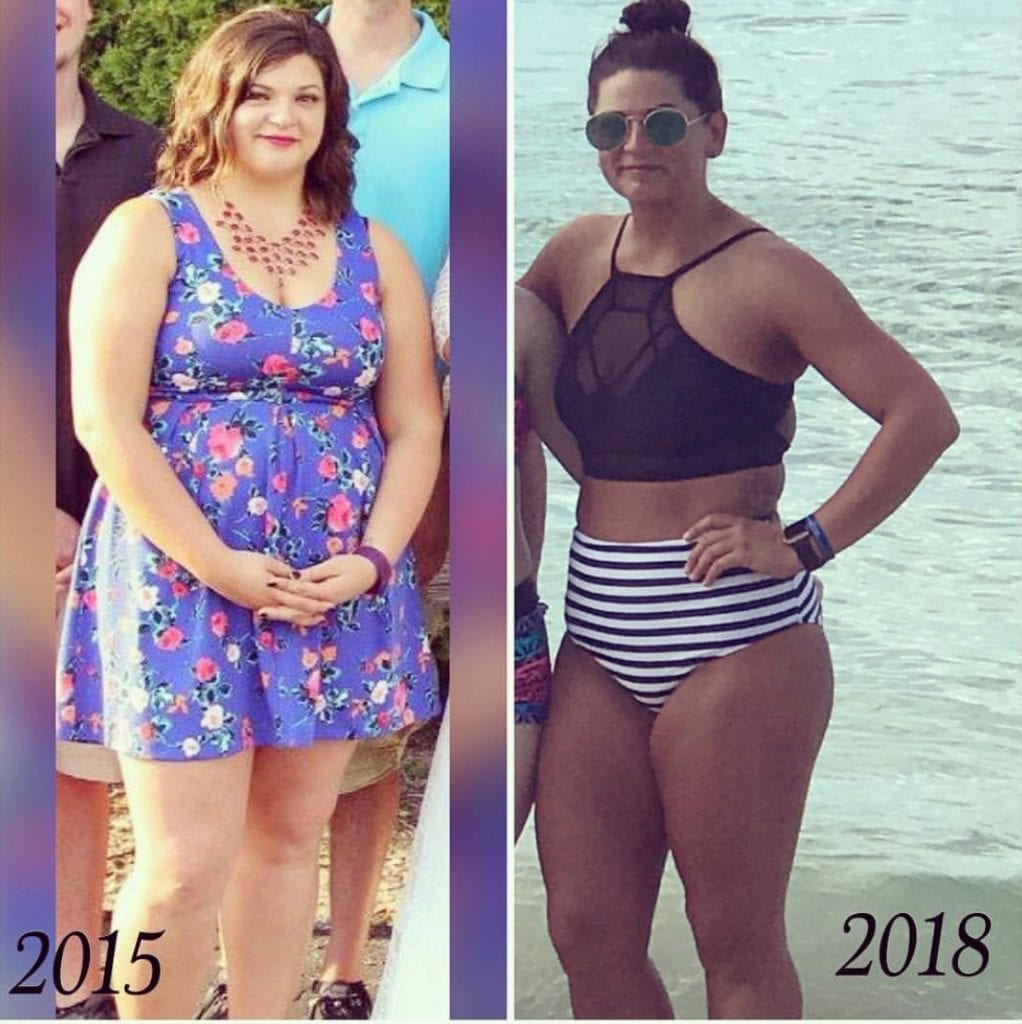The duration of a weight loss journey varies. It depends on individual goals, starting point, and consistency.
Embarking on a weight loss journey involves dedication and patience. Each person’s path is unique, influenced by factors like age, metabolism, and lifestyle. Some may see results in a few weeks, while others might take several months to achieve their goals.
Setting realistic expectations and staying committed are crucial for success. Combining a balanced diet with regular exercise can accelerate progress. Consulting with a healthcare professional or nutritionist can provide personalized guidance. Remember, sustainable weight loss is a gradual process, and maintaining a healthy lifestyle is key. Celebrate small victories along the way to stay motivated and focused on your long-term health goals.

Credit: burnbootcamp.com
Setting Realistic Expectations For Weight Loss
Starting a weight loss journey is exciting but can also be daunting. It’s crucial to set realistic expectations to avoid frustration and disappointment. Understanding how long it might take to see results helps keep motivation high. Here’s what you need to know about setting achievable goals for your weight loss journey.
Factors Influencing Weight Loss Timeline
Several factors can influence how quickly you see results. These factors include your metabolism, diet, and exercise routine.
- Metabolism: Your metabolic rate affects how quickly you burn calories.
- Diet: The types of food you eat can speed up or slow down weight loss.
- Exercise Routine: Consistent physical activity helps shed pounds faster.
- Age: Younger individuals may lose weight faster due to a higher metabolic rate.
- Gender: Men often lose weight quicker due to more muscle mass.
- Sleep: Quality sleep aids in faster weight loss.
Average Duration For Noticeable Results
The duration to see noticeable results can vary. On average, you may start seeing changes within 4 to 6 weeks. This timeline can differ based on the factors mentioned above.
| Weeks | Expected Results |
|---|---|
| 1-2 | Initial water weight loss |
| 3-4 | Visible changes in appearance |
| 5-6 | Noticeable weight loss |
| 7-8 | Clothes fitting better |
Remember, weight loss is a gradual process. Patience and consistency are key to achieving your goals.
Initial Changes: The First Month
Embarking on a weight loss journey involves numerous changes. The first month is crucial. During this period, you’ll notice various transformations. These adjustments set the tone for your entire journey. Understanding these changes can help you stay motivated and focused.
Water Weight Vs. Fat Loss
In the first month, most of your weight loss might be water weight. This is because the body sheds excess water initially. It can be misleading, but it’s a positive start.
Your body also begins to burn fat. But this process is slower. Fat loss requires more time and consistent effort.
| Water Weight | Fat Loss |
|---|---|
| Occurs quickly | Takes longer |
| Mostly in the first few weeks | Continues throughout the journey |
| Can be misleading | Indicates real progress |
Psychological And Physical Adjustments
Your mind and body undergo significant changes in the first month. Physically, you may feel more energized as your body adapts to a healthier lifestyle. This boost is a great motivator.
Psychologically, you might experience a range of emotions. Feeling motivated one day and discouraged the next is normal. It’s essential to stay positive and patient.
- Physical Adjustments: Increased energy levels, improved sleep, and better mood.
- Psychological Adjustments: Enhanced self-esteem, fluctuating motivation, and possible frustration.
Tracking your progress can help you stay on track. Use a journal to note down your feelings and achievements. Celebrate small wins to maintain motivation.
Short-term Progress: 1-3 Months In
The first few months of a weight loss journey are crucial. This is the time to set the foundation for long-term success. During the first 1-3 months, many people see significant changes. This can be a great motivator. It’s important to track your progress and stay committed.
Evaluating Early Results
After 1-3 months, it’s time to evaluate your early results. Many people notice changes in their weight and measurements. It’s important to use multiple methods to track progress. Here are some ways to evaluate:
- Weight: Regularly check your weight on a scale.
- Measurements: Measure your waist, hips, and other areas.
- Photos: Take before and after photos to see visual progress.
- Clothing Fit: Notice how your clothes fit better.
These methods help provide a full picture of your progress. They can keep you motivated and on track.
Adjusting Strategies For Continued Success
After evaluating early results, you might need to adjust your strategies. Changes in diet and exercise can help. Here are some tips for making adjustments:
- Diet: Adjust your calorie intake if needed. Focus on eating healthy foods.
- Exercise: Increase the intensity or duration of your workouts.
- Hydration: Drink more water to help your body function better.
- Sleep: Ensure you get enough sleep to aid recovery.
These adjustments can help you continue to see progress. Remember, consistency is key. Keep evaluating and adjusting your strategies as needed.
Mid-term Milestones: 3-6 Months
The 3-6 months mark is a crucial time in your weight loss journey. During this phase, you may hit several key milestones. Your progress might start to slow, but stay motivated. Recognize that consistency is the key to long-term success.
Overcoming Plateaus
Plateaus are common in a weight loss journey. You might notice your weight isn’t dropping as quickly. This can be frustrating, but it’s normal. Your body is adjusting to the new lifestyle changes.
Consider changing your exercise routine. Try new activities to keep your body guessing. Increase intensity or switch up your workout types.
Evaluate your diet. Sometimes, small adjustments can make a big difference. Ensure you are consuming a balanced diet rich in nutrients. Avoid empty calories and focus on whole foods.
Celebrating Non-scale Victories
Weight isn’t the only measure of success. Celebrate non-scale victories to stay motivated.
- Clothing Fit: Notice your clothes fitting better? That’s progress!
- Energy Levels: Feel more energetic? Your body appreciates the changes.
- Stamina: Can you exercise longer or harder? You’re getting stronger!
These victories are essential. They remind you of the positive changes happening. Non-scale victories are just as important as the numbers on the scale.
Long-term Results: Beyond 6 Months
Embarking on a weight loss journey is a significant step. The first six months often show the most dramatic changes. But what happens after that? Achieving long-term results requires consistency and dedication. It involves more than just shedding pounds; it’s about maintaining a healthy lifestyle.
Sustaining Weight Loss
Sustaining weight loss is crucial for long-term success. After the initial phase, the body adapts to new habits. This period is essential for solidifying these changes. Regular monitoring helps track progress. This can include weighing yourself weekly or maintaining a food diary. Consistency is key. Small, sustainable changes often lead to lasting results.
| Strategy | Action |
|---|---|
| Regular Exercise | Engage in at least 30 minutes of activity daily. |
| Balanced Diet | Include a variety of nutrients in your meals. |
| Hydration | Drink at least 8 glasses of water daily. |
| Sleep | Aim for 7-9 hours of sleep every night. |
Lifestyle Changes And New Habits
Developing new habits is vital for long-term weight loss. Identify which old habits led to weight gain. Replace them with healthier alternatives. For instance, swap sugary drinks with water or herbal tea. Prioritize home-cooked meals over fast food.
Building a support system can also make a significant difference. Surround yourself with encouraging friends and family. Join support groups or online forums. These communities offer motivation and accountability.
- Meal Planning: Prepare meals ahead to avoid unhealthy choices.
- Mindful Eating: Focus on your food and chew slowly.
- Regular Activity: Integrate physical activity into your daily routine.
Consistency in these habits will ensure long-term success. Remember, it’s not just about losing weight but maintaining a healthy lifestyle.
The Role Of Diet And Exercise
Embarking on a weight loss journey? Your diet and exercise play crucial roles. Both elements work together to help shed pounds and improve health.
Balanced Diet Essentials
A balanced diet is key to successful weight loss. Focus on whole foods and avoid processed items.
- Fruits and vegetables are rich in vitamins and minerals.
- Whole grains provide fiber and help you feel full longer.
- Lean proteins like chicken, fish, and tofu support muscle health.
- Healthy fats from nuts, seeds, and avocados are essential.
Below is a simple table that outlines daily servings for a balanced diet:
| Food Group | Daily Servings |
|---|---|
| Fruits | 2-4 servings |
| Vegetables | 3-5 servings |
| Grains | 6-11 servings |
| Protein | 2-3 servings |
| Dairy | 2-3 servings |
Creating An Effective Exercise Regimen
Exercise is the other half of the equation. Aim for a mix of cardio and strength training.
- Cardio Exercises: Activities like running, cycling, and swimming. Do these for at least 150 minutes per week.
- Strength Training: Include weight lifting or body-weight exercises. Do these at least two days per week.
- Flexibility: Stretching exercises like yoga can improve flexibility. Do these three times per week.
Tracking your progress is also important. Use a journal or app to log your workouts. This helps you stay motivated and see improvements over time.
A balanced diet and effective exercise routine will make your weight loss journey successful. Focus on these essentials for lasting results.
Psychological Aspects Of Weight Loss
Weight loss is not just about diet and exercise. The mind plays a crucial role. Understanding the psychological aspects can make the journey smoother and more successful. Let’s explore the mental challenges and how to tackle them.
Maintaining Motivation
Staying motivated is often the hardest part. Many start strong but lose steam. Here are some tips:
- Set realistic goals: Break down big goals into smaller, manageable steps.
- Create a vision board: Visual aids can inspire and remind you of your goals.
- Track progress: Use apps or journals to note achievements.
- Join a support group: Sharing your journey with others can boost motivation.
Dealing With Setbacks
Setbacks are part of any weight loss journey. Handling them positively is key.
| Setback | Strategy |
|---|---|
| Missed Workout | Don’t dwell. Plan a makeup session. |
| Overeating | Forgive yourself. Return to your plan immediately. |
| Lack of Progress | Reassess your plan. Adjust diet or exercise. |
Remember, setbacks are temporary. Stay focused on your long-term goals.

Credit: www.richlandmd.com
Beyond The Scale: Other Measures Of Progress
Your weight loss journey is more than numbers on a scale. There are other ways to measure progress. These methods can show you how far you’ve come.
Body Composition Changes
Body composition reveals what your body is made of. It includes muscles, fat, bones, and water. Losing weight can mean losing fat but gaining muscle. This is a good change.
Take measurements of your waist, hips, and thighs. You might see inches lost even if the scale doesn’t move. Use a tape measure for this. You can also use body fat calipers. These measure the thickness of fat under your skin.
Look at how your clothes fit. Are your pants looser? Can you wear smaller sizes? These are signs of progress.
Health Benefits Beyond Weight
Weight loss can improve many health aspects. Check your blood pressure. Lower blood pressure is a sign of better health. Measure your cholesterol levels too. Lower cholesterol means a healthier heart.
Track your energy levels. Do you feel more active? Increased energy shows a healthier body. Look at your sleep patterns. Better sleep is a result of weight loss.
Monitor your mood. Feeling happier can be a sign of progress. Weight loss often boosts mental health.
| Health Aspect | Sign of Progress |
|---|---|
| Blood Pressure | Lower readings |
| Cholesterol | Lower levels |
| Energy | Feeling more active |
| Sleep | Better quality |
| Mood | Feeling happier |
- Waist measurements: Check for inches lost.
- Clothing fit: Notice looser clothes.
- Energy levels: Feel more active and awake.
- Mood improvements: Observe a happier disposition.

Credit: abcnews.go.com
Frequently Asked Questions
How Long Does It Realistically Take To Lose Weight?
Losing weight varies per person, typically taking weeks to months. Aim for 1-2 pounds per week for safe results.
How Long Does It Take For Weight Loss Progress To Show?
Weight loss progress typically shows in 2-4 weeks. Results vary based on diet, exercise, and individual metabolism. Keep consistent for the best results.
Which Body Part Loses Fat First?
Fat loss varies by individual. Generally, the face, arms, and legs tend to lose fat first. Genetics and body type influence fat loss patterns. Exercise and diet play crucial roles.
What Is A Realistic Weight Loss Timeline?
A realistic weight loss timeline is losing 1-2 pounds per week. This rate is safe and sustainable. Consistency in diet and exercise is key. Always consult a healthcare provider before starting any weight loss plan.
Conclusion
A weight loss journey varies for each person. Consistency and dedication are essential. Listen to your body and stay motivated. Celebrate small victories along the way. Remember, sustainable weight loss takes time. Consult healthcare professionals for personalized guidance. Your journey is unique and achievable with patience and effort.


